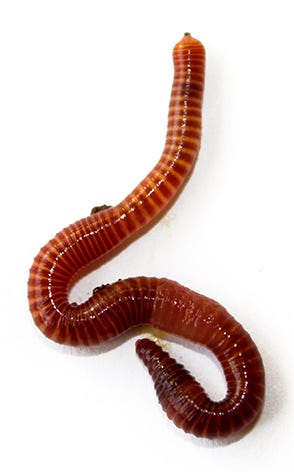A Biased View of Red Wiggler Express
Table of ContentsThe smart Trick of Red Wiggler Express That Nobody is DiscussingThe Greatest Guide To Red Wiggler ExpressRumored Buzz on Red Wiggler ExpressSome Known Facts About Red Wiggler Express.The Of Red Wiggler Express
Some worm farmers in fact keep food and water to mimic dry spell conditions and bump up cocoon production. We do not advise this for the home composter as it has the prospective to exterminate way too many of your finest worms. Since you recognize all about the red worm it's time to go out and find an excellent distributor and obtain an extra pound or two and start your own worm farm.This guide will introduce you to the red wiggler to consist of a much deeper on dive on the types and information on reproduction, life cycle, and reproduction. We'll discuss exactly how to maintain red wigglers and why they must be the best worm for the majority of composters. The red wiggler (binomial name: eisenia fetida) is the globe's most common composting worm.
A research suggests that the two can generate hybrid children, a sensation which should otherwise be considered impossible between many worm varieties. Fun truth: The "fetid" component of the binomial name describes what some state is a reeky secretion the red wiggler makes use of to repel predators. However I've been taking care of them for many years and never ever observed this! The anatomy of a red wiggler resembles that of various other typical earthworms; a long-segmented body starts at the sharp head and ends at a slightly-flatted tail.
The Only Guide to Red Wiggler Express
The digestion tract is easy, beginning at the mouth where the worm starts to consume its food prior to passing it on the pharynx. The throat is a muscle section which imitates a pump to draw food into the mouth before pumping it out right into the esophagus. The esophagus is narrow and thin-walled and works as the "waiting space" for the gizzard.
Note: This demand for grinding is why grit is suggested in a worm bin. The worm includes no indigenous grinding ability so the worm counts on ingested grit to help grind its food in the gizzard. The belly is where the very first chemical break down of food occurs with the assistance of a protein-busting enzyme.

Within 42 days, these baby worms will reach sexual maturity as evidenced by the development of the clitellum. A mature red wiggler can be expected to live between one to 3 years. The mighty red wiggler may in some cases be made use of as a bait worm for smaller fish or as a healthy protein resource for hens and reptiles.
Red Wiggler Express for Beginners
And as pointed out over, they are the most typical composting worm in the world. Instead, a combination of expense, hardiness, and convenience in a broad array of temperatures makes it the most appropriate composting worm for a lot of new vermicomposters.
This is an usual method amongst worm carriers that do not wish to take the chance of having the worms rest in a hot or chilly stockroom over the weekend. Worm cultivators are not saving worms in a scenario where they prepare to deliver. The worms must be collected from their habitat initially, so growers will certainly typically set a Friday or Saturday deadline in order to harvest in time for a Monday delivery.
To minimize shipping price, you may want to see if there are any neighboring "Mother and Pop" shops with a Google search. If you do not find what you're seeking, then I invite you to look into worms with the Urban Worm Company! The amount of red wigglers you acquire need to be only reliant upon the area you have readily available for vermicomposting.
I call these the "Large 3" factors of worm bin maintenance. If you keep all 3 within proper ranges, then there's not * that * much that can fail with your container. As stated previously, red wigglers have a wide temperature resistance. For ideal outcomes, maintain a temperature level of 55F-90F. Brief separations out of that temperature level variety are fine.
Facts About Red Wiggler Express Uncovered

For ideal results, you intend to aim for about 60-70% dampness level. The easiest examination for this is to squeeze a handful as difficult as you can. At the excellent moisture levels which is simply under 70% that handful need to hardly generate one drop of liquid. pH in a worm bin is quite very easy to keep.


The European Nightcrawler, the bigger cousin of the red wiggler, is equally as ravenous and additionally creates a good lure worm. However it chooses a little a cooler atmosphere than the red wiggler. The African Nightcrawler is a really big composting worm and makes a beautiful, granular actors.
The Indian Blue is ravenous, but also favors a warmer environment and it also exhibits a propensity to get away the bin. The red wiggler is a hardy worm and isn't as fussy concerning its climate. I like to call it the Ford Taurus of vermicomposting worms; you will not brag to your hardcore composting buddies that you possess them, however they will offer you well.
See This Report on Red Wiggler Express
Surefire to life 1/2 pound of hand sorted Red Wigglers/Compost with worms (+500 worms) in various phases of life from cocoons to mature worms in their all-natural environment/bedding. Hand sorted worms cut down on the disruption of the worms thus guaranteeing live distribution. Red wiggler worms do not such as vibrations or light.